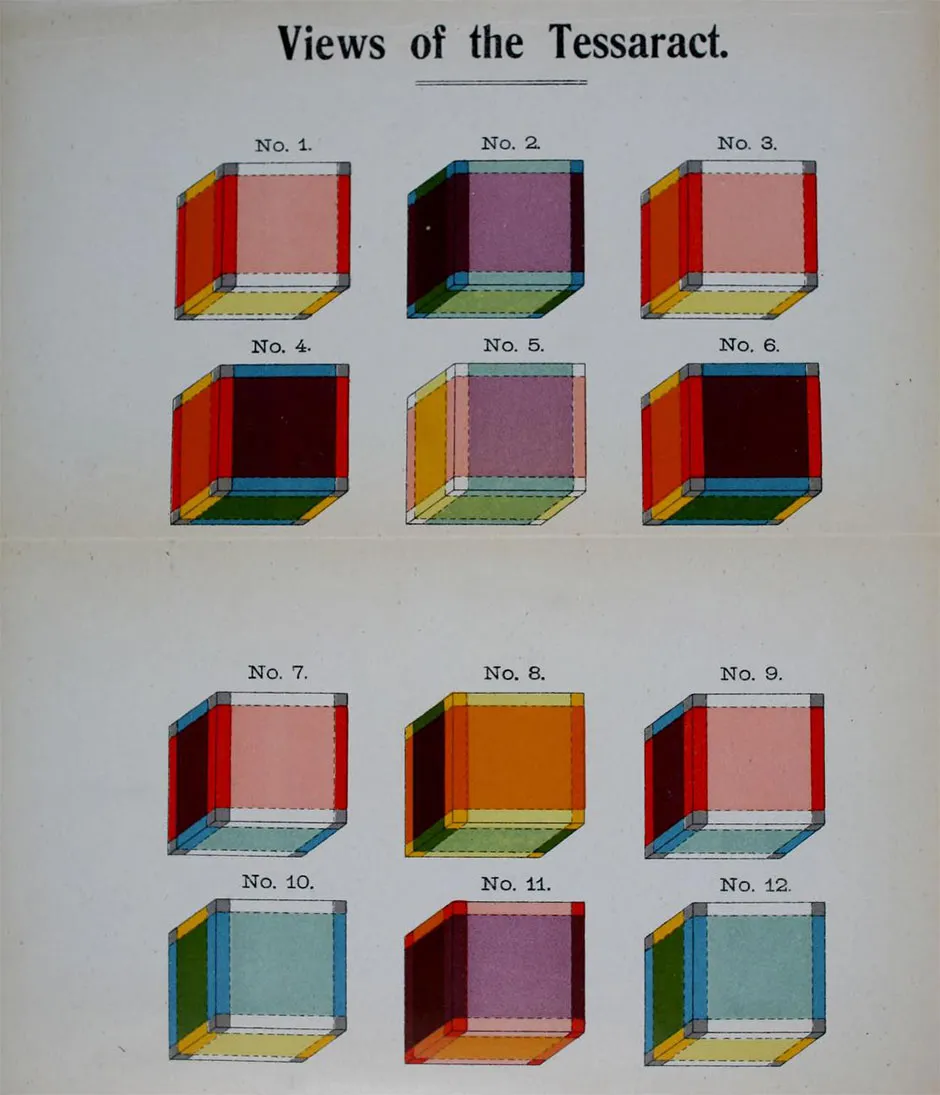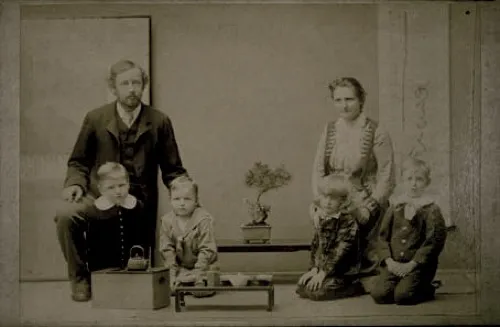The late-Victorian writer, inventor and theorist Charles Howard Hinton has largely been forgotten by intellectual history. Where his legacy has survived, it is as a curious cultural footnote: he is discussed by two characters in Iain Sinclair’s first novel, White Chappell, Scarlet Tracings, and his theories are considered in Alan Moore’s cult graphic novel From Hell. In each of these, he is depicted as a visionary whose ideas invite madness.
His mathematical and physical theories were briefly revived in the 1980s by the cyberpunk novelist Rudy Rucker and the legendary Argentinian fabulist Jorge Luis Borges included Hinton’s ‘What is the Fourth Dimension?’ in his anthological ‘Library of Babel.’
Perhaps most weirdly of all, Hinton is referenced in an obscure ‘Teleportation Feasibility Study’ commissioned by the US Air Force in 2005. It’s an unusual bibliography, to say the least.
There is good reason for this odd legacy. Hinton’s life’s work was the invention and description of a system he described as “thought mechanics,” enabling his readers to think in four dimensions of space. In the early 1880s the idea that space might have more dimensions than human beings could see was enjoying some vogue in intellectual circles.
Borrowed from geometry by the physicist W. K. Clifford, and given impetus by the English-language writing of the polymath Hermann von Helmholtz, these extra dimensions of space were seized upon by Spiritualists as a scientifically-validated source for the “intelligences” apparently communicating in seances.
Hinton approached the idea of the fourth dimension in several directions at once. In 1884 he republished as a pamphlet an essay describing for his readers how to imagine the fourth dimension using the argument by analogy: as from two dimensions to three dimensions, so from three dimensions to four. His publisher cannily gave it the subtitle “Ghosts Explained.”
In subsequent pamphlets, Hinton explained his reasons for thinking that the fourth dimension was a reality, and the benefits of learning to access it with the mind, arguing that higher-dimensional thought would allow interconnection between consciousnesses.

He also essayed demonstrations of life in two dimensions to better understand the translation between lower and higher dimensioned spaces. There were also a batch of proto-science fiction stories: a thermodynamic allegory of altruism, ‘The Persian King’; ‘Stella,’ an invisible woman narrative; and An Unfinished Communication, a woozy and distorted first-person tale of a vision of a life replaying in the moment of a death. Hinton’s career as a public intellectual of the more speculative kind showed every sign of taking off.
And then, in October 1886, disaster struck. In the space of a handful of days, accompanied by his wife, Hinton presented himself first to the headmaster at his school, Uppingham College, and then to police at Bow Street, to confess to bigamy.
He was arrested and held on remand. Within the week he was tried and his second wife Maud, married under the false name of Weldon, was forced to take the stand as a witness. The fact of their false marriage and twin sons became public knowledge.
Intellectual London was scandalised and the members of the influential Men and Women’s Club hinted at yet more dark and criminal behaviour on the part of Hinton’s father James, an unconventional philosopher and advocate of polygamy.
Read more about science history:
- The Bone Wars: how a bitter rivalry drove progress in palaeontology
- Shakespeare's remarkable scientific accuracy
Charles Howard Hinton was convicted and, on his release, struggled to find work. Unable to support his young family, he elected to take his chances in the cultural frontier of Japan, newly opened to foreigners.
While Hinton was in exile, his sister-in-law, Alicia Boole Stott, and an old university friend from Oxford saw through to publication his master-work, A New Era of Thought.
This book detailed not only his philosophy of higher-dimensional altruism, but the invention at the heart of his project: a set of one-inch cubes which could be arranged into a cubic foot and used as a kind of “solid paper” for picturing the passage of the shadows of four-dimensional objects through three-dimensional space.
Alicia, the daughter of the mathematician George Boole, whose system of logic underpins our search engine inquiries, was well-placed to work on the manuscript: she had followed Charles’s system to the letter.
In the early 20th Century, she published two papers detailing her descriptions of the four-dimensional analogues of the cube, the tetrahedron, octahedron and the dodecahedron. With no other formal geometric training, Alicia had built models of the four-dimensional equivalents of the Platonic solids. The student had out-stripped the teacher.

Howard, meanwhile, summoned his first family out to Japan when he secured a post as the headmaster of a school founded in Yokohama to educate the children of expatriate Brits on the Victorian public-school model.
In Japan he befriended the most famous Japanologist of his generation, Lafcadio Hearn. Having rebuilt their life abroad, in 1893 the Hinton family shipped to the USA for Howard to take up a post as instructor in mathematics at the College of New Jersey, the institution that within a couple of years would become Princeton.
In America, Hinton turned his mind towards less cerebral pastimes. In 1895 he patented his designs for a gunpowder-fuelled canon which fired baseballs at batters. Over the next few years, he trialled and honed his invention, becoming a minor celebrity across the States and striking out the entire Princeton team.
His academic career, meanwhile, did not fare so well. Following a brief appointment at the University of Minnesota he worked as a computer at the US Naval Observatory’s Nautical Almanac, calculating the future positions of heavenly bodies in the sphere of the sky for marine navigation.
Read more about mathematicians:
- Ada Lovelace: a mathematician, a computer scientist and a visionary
- Katherine Johnson: mathematician and NASA pioneer dies age 101
- Alan Turing’s legacy should be for his triumphs, rather than his tragedy
After several years at the Almanac, he took the examinations for the US Patent Office: legend had it that he crammed his revision into one night and passed with flying colours, working at the Office for the next few years.
In the early years of the 20th Century, Hinton continued to write for popular magazines, describing his four-dimensional theories, publishing a collection of essays, and addressing learned and philosophical societies.
He essayed more grounded speculations that fourth-dimensional extension might exist only within the brain at the sub-microscopic scale, and that electricity might be a function of fourth-dimensional rotations in the aether. His final book imagined a sequel to the original higher-dimensional novel, Edwin Abbott’s 1884 book Flatland.
On 30 April 1907, Hinton addressed the Society of Philological Inquiry in Washington DC. According to reports, having offered a toast to female philosophers, he dropped dead in the lobby leaving the dinner. He was 54.